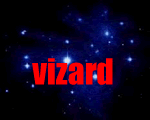

Overview
VIZARD is a Java program for analysis and visualization of Affymetrix GeneChip® data. I (Nick Moseyko) wrote it at the University of California, Berkeley, while working on the transcriptional profiling of the gravitropic response in Arabidopsis thaliana, the most commonly studied plant model organism. Although I stopped the development of the program in early 2002, you may still find it quite useful. VIZARD includes several integrated tools for filtering, sorting, clustering and visualization of gene expression data as well as tools for discovery of regulatory motifs in upstream sequences. It also includes annotation and upstream sequence databases for the majority of genes represented on the Affymetrix Arabidopsis 8K GeneChip® array. VIZARD is available free of charge for educational, research, and not-for-profit purposes. To read the full text of the terms under which the program is distributed, click here.
Features and advantages
The major advantages of the current VIZARD 1.2 version over other public domain programs for microarray data analysis include:
- A user can perform most operations within one program. Once gene expression data is loaded into VIZARD, almost all usual microarray data analysis tasks can be done without leaving the program.
- VIZARD takes into account GeneChip®-specific features such as the noise factor and the absolute call. Currently, there is no publicly available software capable of doing this.
- The program can filter data based on a control experiment as well as an additional mock experiment or any other experiment of choice. There are several advanced filtering options not found in other programs for microarray data analysis.
- VIZARD integrates existing public domain tools to facilitate data analysis. For example, clustering of GeneChip® data can be done using the European Bioinformatics Institute web tools. Gene function lookup is done using MIPS Arabidopsis Thaliana DataBase (MATDB) at the Munich Information Center for Protein Sequences. Regulatory motif searches can be done via integration with AlignACE software (created at the Church Lab, Harvard Medical School, Harvard University), which is at present one of the most popular and advanced motif discovery programs used in microarray data analysis. VIZARD serves as glue between the above tools, and a user can conveniently perform most tasks within one program.
- Easy navigation and data cleaning. All available data and commands for a gene of interest are displayed by selecting the gene and double- or right-clicking on it: probe set ID, annotation (gene, product, function), fold changes, expression levels (absolute differences), absolute calls, expression pattern (graph), link to external annotation database (MATDB), and the Delete command (to remove the gene from a data set if neccessary).
- VIZARD includes an annotation database for fast access to gene function as well as a database of upstream sequences of all known genes represented on the Affymetrix Arabidopsis GeneChip® array.
- Because publicly available annotation data changes at a very fast pace, VIZARD can update the included annotation database with up-to-date information via batch download from MATDB.
- VIZARD can automatically update/upgrade itself, as soon as any of its features are modified or new features are added or a new version is released. This removes the need to download and reinstall the program when new updates/upgrades become available.
VIZARD 1.2 released
This new release adds several new features and fixes bugs found in the previous 1.1 release:
- Added clustering of GeneChip® data using the European Bioinformatics Institute (EBI) EPCLUST web tool. After microarray data is filtered locally, it can be automatically submitted to EPCLUST for hierarchical and K-means clustering. VIZARD can also cluster/group together genes showing either similar or opposite expression patterns using either positive or negative Pearson correlation, respectively. Other known to us public domain programs for microarray analysis cluster genes using only positive Pearson correlation. Clustering based on negative Pearson correlation is helpful when a researcher wants to determine what gene has an opposite expression pattern compared to a selected gene of interest.
- Added support for discovery of regulatory motifs in upstream sequences via integration with AlignACE software. VIZARD can extract and format upstream sequences of genes left after filtering or belonging to any particular cluster of interest, and then submit them as input to AlignACE. VIZARD will also automatically compute GC-content of these upstream sequences and will provide the computed GC-content as the GC-background parameter for AlignACE. Since AlignACE is currently supported only on the Linux platform, VIZARD can invoke AlignACE using either client-server approach (for example, when a user works at the Windows machine) or locally, when both programs are installed on the same computer.
- Added motif statistics, sequence logo generation and saving the sequence logo on the hard disk. As soon as VIZARD receives results from AlignACE, it can process them, display and save motif statistics. It can also submit the AlignACE results to the EBI web tools for sequence logo generation. After VIZARD receives a generated image file from the EBI site, a user can save it on the local hard disk as a GIF file.
- Added an annotation database and an upstream sequence database for the majority of genes represented on the Affymetrix Arabidopsis GeneChip® array. Created via batch download from MATDB.
- Added automatic update/upgrade functionality. VIZARD will update its databases or upgrade itself as soon as new updates/upgrades become available.





